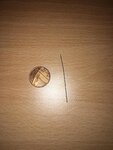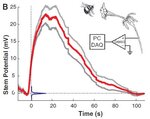engineengineer
Newbie level 3
Hi everyone,
I am trying to measure the potential of some charged object by using a tungsten wire capacitively coupled to it and having this electrode connected to an instrumentation amplifier (namely the AD624). Ultimately, the signal will be converted using an AD converter but firstly, I am working on the sensing and I am observing the output via an oscilloscope.
I've seen this sort of setup in several papers and I am trying to replicate such experiment myself but I am unsure of all the principles and was wondering if anyone has any further advice in terms of the circuit?
I have tested the in-amp using a wave generator and connected the positive and negative terminals to the non-inverting and inverting inputs respectively and got results that is expected. However, when it comes to using the tungsten it becomes more tricky.
I was thinking of soldering the tungsten wire to a piece of wire, which then will be connected to the non-inverting input of the in-amp. The inverting input will be connected to ground.
Does anyone foresee any issues with this?
Essentially to summarize, I want to sense a static voltage on an object (such as an insect hair) and measure it.
Here is a picture of the tungsten needle

Many thanks
I am trying to measure the potential of some charged object by using a tungsten wire capacitively coupled to it and having this electrode connected to an instrumentation amplifier (namely the AD624). Ultimately, the signal will be converted using an AD converter but firstly, I am working on the sensing and I am observing the output via an oscilloscope.
I've seen this sort of setup in several papers and I am trying to replicate such experiment myself but I am unsure of all the principles and was wondering if anyone has any further advice in terms of the circuit?
I have tested the in-amp using a wave generator and connected the positive and negative terminals to the non-inverting and inverting inputs respectively and got results that is expected. However, when it comes to using the tungsten it becomes more tricky.
I was thinking of soldering the tungsten wire to a piece of wire, which then will be connected to the non-inverting input of the in-amp. The inverting input will be connected to ground.
Does anyone foresee any issues with this?
Essentially to summarize, I want to sense a static voltage on an object (such as an insect hair) and measure it.
Here is a picture of the tungsten needle

Many thanks

